How Do You Play Real Tennis?
The Real Tennis Court & The Game
The Real Tennis Court
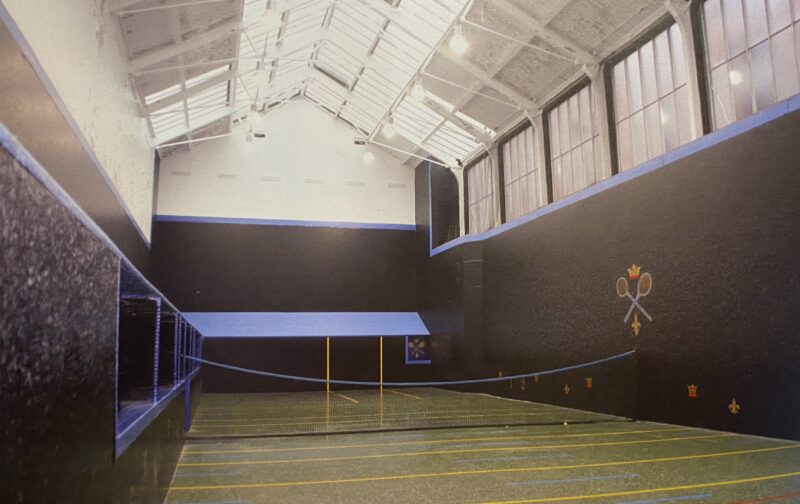
The court is a large area enclosed by walls which is divided in two by the net, over which the players must strike the ball. One end is the ‘Service End’ the other the ‘Receiver’s End’, also known as the ‘Hazard End’. The out of court line is high up above the walls, making for a large and intriguing space to play the game.
Around the court are noticeable features such as the Penthouses, the sloping roofs that extend around three sides of the court, and the Galleries, the netted areas below the Penthouse. Two of the Galleries, the ‘Dedans’ and the ‘Winning Gallery’, are winning shots when the ball enters them, having been struck from the other side of the net. Other features include the ‘Grille’, the window which is also a winning shot if struck. In front of the Grille is a buttress called the ‘Tambour’; if struck it can make for a tough retrieval!
How to Score in Real Tennis
Players are competing for points, games and sets. You will be familiar with the scoring system (15, 30, 40, Deuce, Advantage) as the modern game of Lawn Tennis takes its origins from the game of Real Tennis.
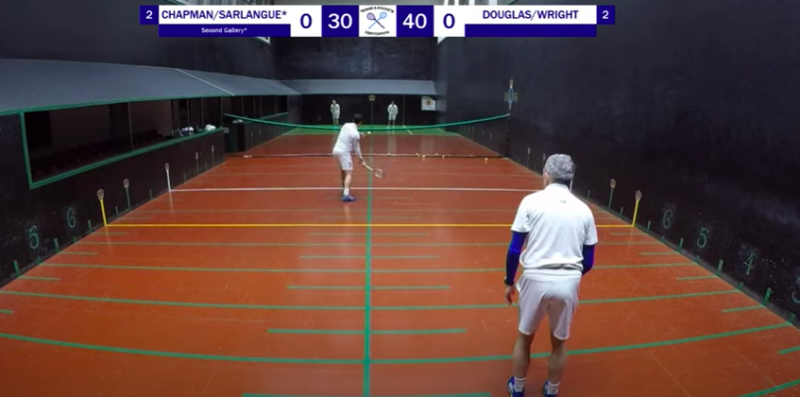
There are three outcomes to a rally – point won, point lost or a ‘Chase’. If the second bounce of the ball on the floor lands in the green area of floor, or enters one of the winning openings, it would result in a point to the player who struck the shot. If the ball is struck into the net or out of court the point is lost. If the ball was to land in the red area, a Chase is created.
There are a few further important differences:
- A set is won by the first player to reach six games (no need to win by two clear games)
- The score is always called in the favour of the player who won the most recent point
- And of course, the main difference – the Chases
What is a 'Chase' in Real Tennis
At the Service End, a Chase is the measurement of the second bounce of the ball on the floor; at the Hazard End, a chase is set when the ball’s second bounce is closer to the net than the service line on the floor; balls entering the galleries on either side of the net (except the winning gallery) also set Chases.
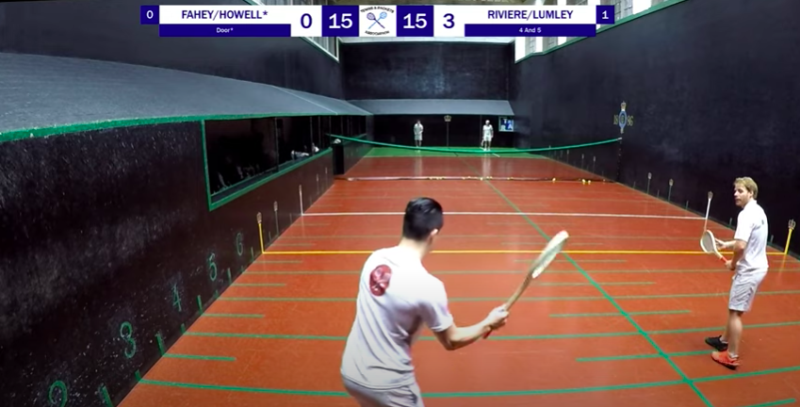
This brings the rally to a halt and the second bounce is measured using the Chase lines. A Chase has been created, but the point has yet to be concluded! At this moment the rallies continue until another Chase is created or a player reaches game point. It is only with two Chases, or game point and one Chase, that the players change ends.
Only bounces on the floor are counted, not the bounces off the walls or Penthouses.
The player who created the Chase must now defend the quality of the Chase, whilst the opponent, to win the point, must improve on the Chase by achieving a second bounce on the floor closer to the back wall than that of the Chase created. In effect, the point is not awarded until after the players have changed ends and determined who has won or lost the Chase!
How to Serve in Real Tennis
To put the ball into play, the Server stands anywhere behind the white line at the Service End of the court.
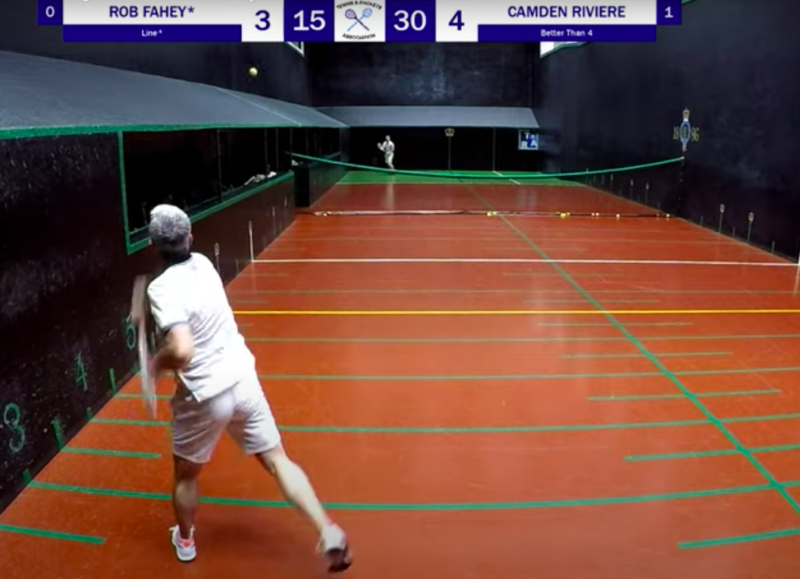
Having chosen a position, the serve may be hit over-arm, under-arm, forehand or backhand and the ball should then be struck on to the side penthouse so that the ball will land in the green area of floor, outlined by white lines, the service box. There are many intriguing service actions from which to choose.
The Strategy
Real Tennis is ultimately a physical game of strategy
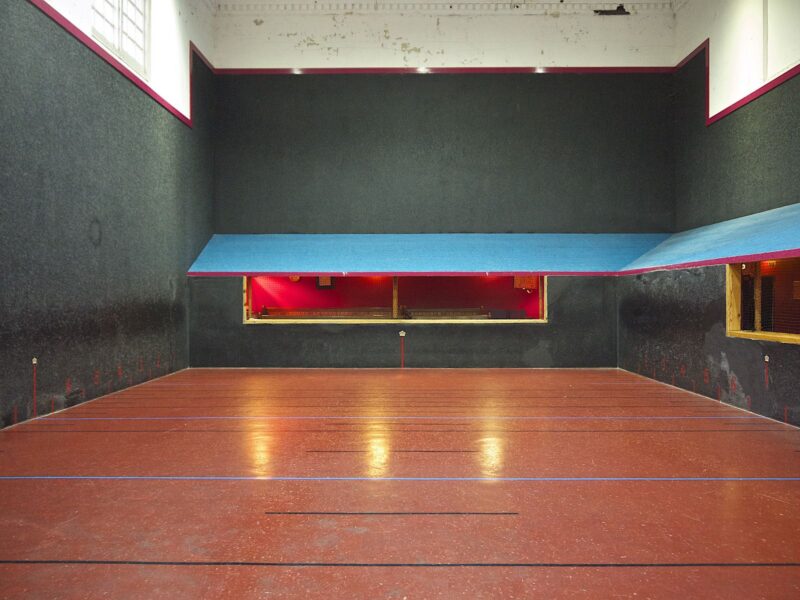
As the court is asymmetric in shape, players have different opportunities of shots from each end of the court. It is recognised that the Service End provides many more winning opportunities than the Hazard End. Thus, it is strategically important to play from the Service End as much as possible. How does one get to the Service End? A Chase must be created! To stay at the Service End, one must prevent further chases from occurring.
It is theoretically possible to be at the Service End for the entire match!